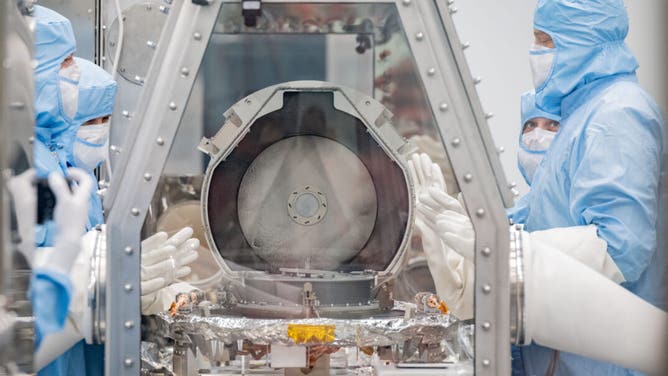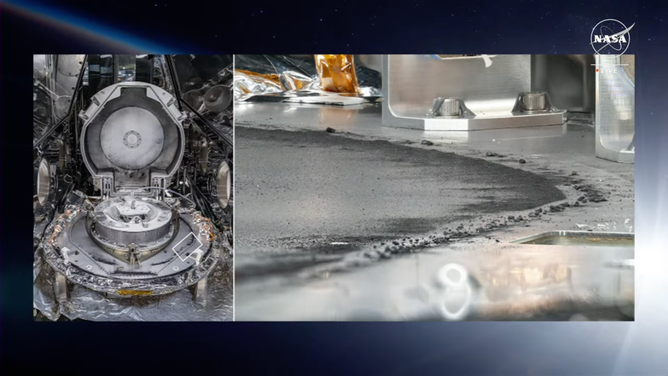NASA finds water, building blocks of life in largest-ever asteroid sample
According to NASA, this material serves as a time capsule from the earliest days of the solar system and helps answer questions about the nature of asteroids and the origins of life.
'Precious cargo:' NASA's OSIRIS-REx gets picked up by a helicopter in Utah
The OSIRIS-REx asteroid sample hitches a ride on a helicopter after landing in the desert in Utah during Sunday.
HOUSTON – Scientists revealed their initial findings Wednesday from NASA’s OSIRIS-REx mission, which provided a sample of particles retrieved from the asteroid Bennu.
According to NASA, this material serves as a time capsule from the earliest days of the solar system and helps answer questions about the nature of asteroids and the origins of life.
Launched on Sept. 8, 2016, OSIRIS-REx became the first U.S. mission to deliver a sample of an asteroid to Earth. The spacecraft landed on Bennu on Oct. 20, 2020, to collect a sample and then released a capsule containing the sample over our atmosphere on Sept. 24.
The capsule carried a nearly 9-ounce sample of rocks and dust collected from Bennu.
‘TOUCHDOWN’: NASA'S ASTEROID SAMPLE COMES BLASTING DOWN TO EARTH, LANDING IN UTAH

Rock sample from Bennu.
(NASA / NASA)
Rich in essential carbon
"This stuff is an astrobiologist’s dream," said Daniel Glavin, OSIRIS-REx sample analyst.
According to Glavin, the sample from Bennu contained carbon, which is essential for all life on Earth. He noted that carbon forms bonds with hydrogen, oxygen, nitrogen and sulfur, which form prebiotic and biological compounds that are part of human proteins and enzymes.
"One of the reasons we want to look for this material in these samples is to understand whether asteroids like Bennu could have not only delivered the water that led to our oceans, but actually seed the Earth with prebiotic chemicals – the building blocks of life," he said. This is the part I just find really exciting."
He noted that the sample retrieved from Bennu has the highest abundance of carbon their research team has ever measured in the nearly 250 meteorites they have studied.
Scientists were able to see some of this carbon by looking at a grain particle from Bennu under ultraviolet light. In doing so, they found carbon locked up in glowing globules of organic matter.
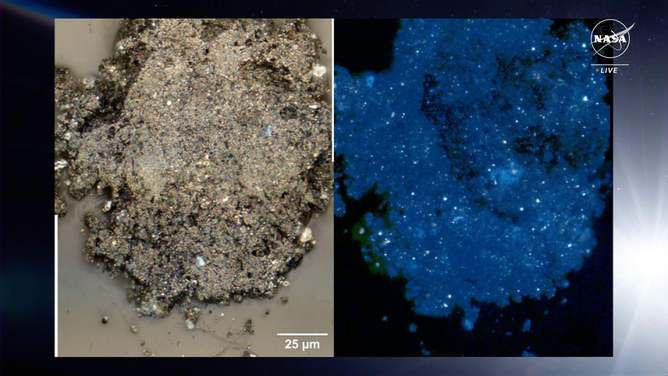
Grain particle from Bennu. On the left, the particle is illuminated under visible light. On the right, the particle is illuminated under UV light. The glowing dots are the organic globules.
(NASA / NASA)
Other images of sample particles were taken with an electron microscope, revealing other important findings.
Water and sulfur too
One of those images showed water-bearing clay minerals collected from Bennu. The minerals have a fibrous structure and have water locked inside their structure, according to Daniel Lauretta, the OSIRIS-Rex principal investigator at the University of Arizona.
NASA'S SPACECRAFT WILL RENDEZVOUS WITH RARE ASTEROID COMING CLOSE TO EARTH
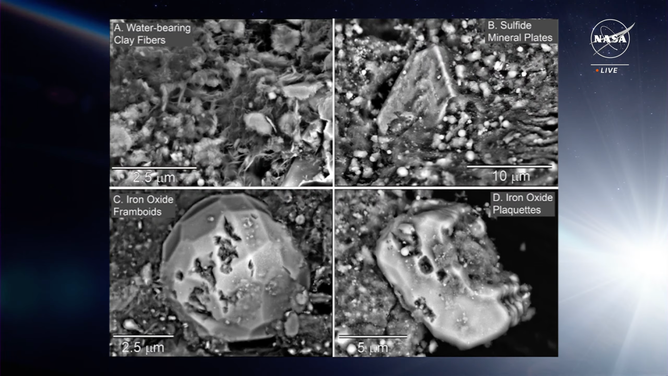
Four images of samples under an electron microscope. Water-bearing clay minerals (top left), sulfide mineral (top right), and iron oxide minerals (bottom images).
(NASA / NASA)
This finding is significant because it supports the theory of how asteroids delivered water to planets, such as a once-barren Earth.
"The reason that Earth is a habitable world, that we have oceans and lakes and rivers and rain is because these clay minerals, like minerals like the ones we're seeing from Bennu, landed on Earth 4 billion years ago to 4.5 billion years ago," Lauretta said.
Another image shown was of a sulfide mineral from the asteroid sample. Lauretta noted that sulfur is a critical element for planetary evolution as it determines how quickly things melt. Sulfur is also critical for biology in that many of the amino acids that give structure to our proteins use sulfur to link and provide those bridges.
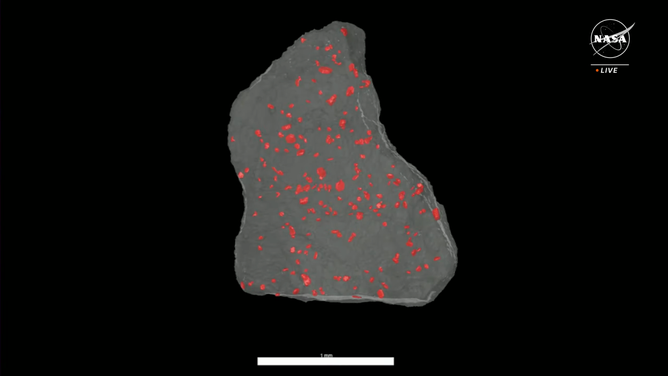
Using X-ray computed tomography, scientists can see sulfide minerals (in red) inside of a piece of rock from the Bennu sample without cutting into the rock.
(NASA / NASA)
Two types of iron oxide minerals, or magnetite, were also discovered in the sample. According to Lauretta, magnetite reacts to magnetic fields and plays an important role in organic evolution, particularly by catalyzing certain reactions.
"We're looking at the kinds of minerals that may have played essential roles in the origin of life on Earth," he said.
Research on the Bennu sample has only begun. For now, the sample is being housed and studied at a laboratory in NASA’s Johnson Space Center in Houston.

